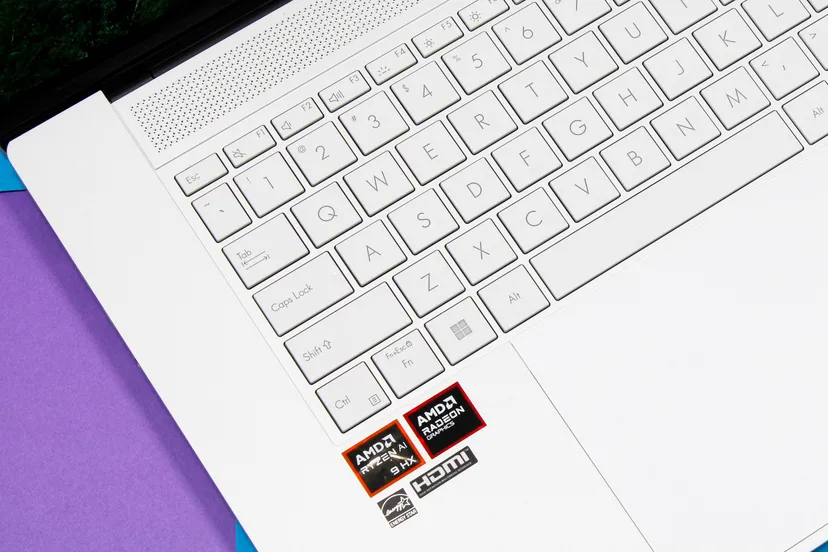Many laptops and gaming handhelds share a single pool of memory between the CPU and GPU — and sometimes, you might want that RAM boosting your graphics instead. Now, AMD won’t make you dive into a BIOS to reroute that power. The company’s new Variable Graphics Memory lets you turn up to 75 percent of your system memory into dedicated video RAM, just by tapping a button in AMD’s desktop Adrenalin app.
It’s only currently available for AMD AI 300 “Strix Point” laptops, and how much RAM you’ll be able to divert depends on your system’s total — AMD explains that the “medium” setting will turn a 32GB laptop that came with 512MB of video memory into a 24GB one with 8GB of dedicated VRAM.
:format(webp)/cdn.vox-cdn.com/uploads/chorus_asset/file/25616289/AMD_Gaming_5_1724429577211.jpg)
You might be wondering: does that extra video memory actually make a difference? Well, it depends on the game. Some games, like Alan Wake II, require as many as 6GB of VRAM and will throw errors at launch if you’re short — Steam Deck, Asus ROG Ally, and Lenovo Legion Go buyers have been tweaking their VRAM settings for some time to take games to the threshold of playability.
But in early testing with the Asus Zenbook S 16, a Strix Point laptop that’s already shipped with this feature, my colleague Joanna Nelius saw that turning it on isn’t a silver bullet for every game. With 8GB of VRAM, the laptop played Control notably faster (65fps vs. 54fps), but some titles had smaller boosts, no boost, or even slight frame rate decreases.
AMD Variable Graphics Memory early test
| 1200p @ Low (upscaling off) | Zenbook S 16 Ryzen AI 9 HX 370 (0.5GB RAM) | Zenbook S 16 Ryzen AI 9 HX 370 (8GB RAM) |
|---|---|---|
| Borderlands 3 | 77 | 76 |
| Control | 54 | 65 |
| Cyberpunk 2077 | 40 | 44 |
| Far Cry 6 | 56 | 62 |
| Hitman 3 (Dartmoor) | 55 | 55 |
| Hitman 3 (Dubai) | 61 | 56 |
| Red Dead Redemption 2 | 47 | 49 |
| Returnal | 31 | 35 |
| Shadow of the Tomb Raider | 53 | 54 |
| Total War: Warhammer 3 (Battle) | 51 | 48 |
| Total War: Warhammer 3 (Campaign) | 38 | 35 |
Your mileage will vary — but I’m eager to find out if it’s a big boost in particular games!
AMD’s also bringing its Fluid Motion Frames 2 to Strix Point laptops in technical preview today, after previously opening it up to desktop GPUs and last-gen notebook GPUs. It increases frame rate by imagining new frames, now with less jitter and lag.
:format(webp)/cdn.vox-cdn.com/uploads/chorus_asset/file/25616275/AFMF2_Benchmarks___1.jpg)
There, AMD says you can get substantial boosts combined with VGM, assuming you’ve got at least 50fps to work with before you apply the frame-generating technique — though AMD doesn’t say whether you’re getting any more frames with AFMF 2 than you did with the original version of the tech.
The company does claim, though, that if your laptop can already manage 39fps in, say, Horizon Zero Dawn, you can now play it at a (theoretically) smooth 66fps on a 2880 x 1800 laptop screen if you combine AFMF2, VGM, and AMD’s FSR upscaling tech.
:format(webp)/cdn.vox-cdn.com/uploads/chorus_asset/file/25616276/AFMF_2___Benchmarks_2.jpg)
In other AMD laptop gaming news, the company’s just announced the RX 7800M, a new up-to-180W chip that comes with 12GB of dedicated video memory. Tom’s Hardware calls it “essentially a stripped-down RX 7800 XT,” comparing it to the desktop GPU, but it’s also filling a huge hole in AMD’s lineup between the flagship RX 7900M and the RX 7600M XT, as you can see below.
:format(webp)/cdn.vox-cdn.com/uploads/chorus_asset/file/25616286/amd_7000_mobile_graphics.jpg)

